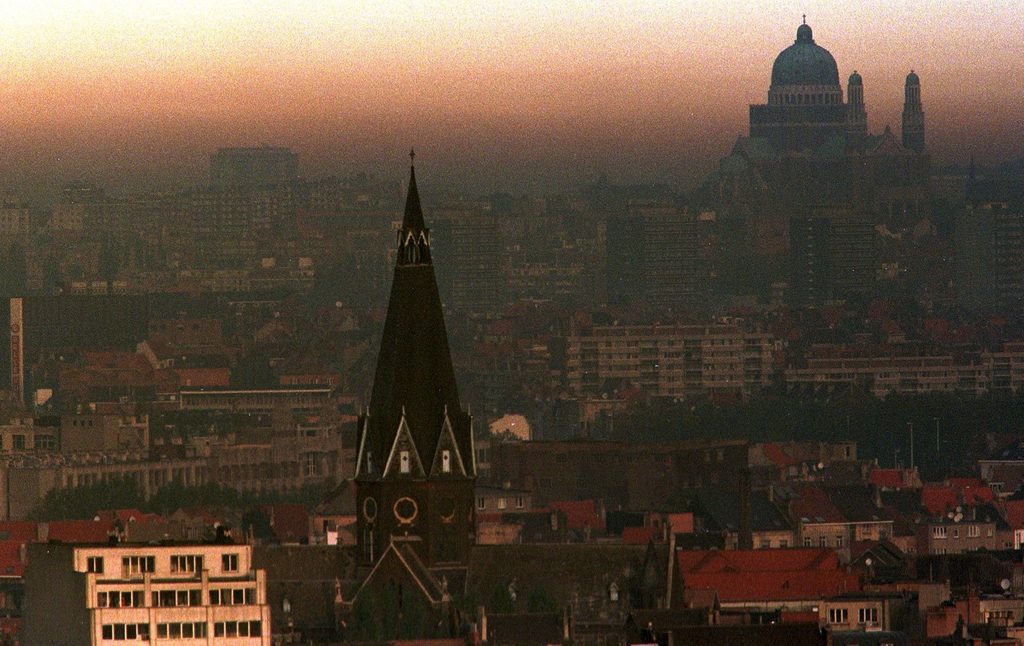People living in heavily polluted areas have to visit their doctor more regularly, highlighting that air pollution not only has a negative impact on people's health but also national medical costs.
Air pollution poses the greatest environmental health risk to the European population: the annual number of premature deaths in the EU due to fine dust is estimated at 238,000. From the Canal side of Rue Antoine Dansaert to the streets around Madou, many Brussels residents live in a polluted neighbourhood according to the World Health Organisation's (WHO) standards.
The health impact on people living in such polluted areas has been highlighted by a recent study by the Independent Health Insurance Funds, together with researchers from KU Leuven, UHasselt, Vito and the Interregional Cell for the Environment.
It found that young people and adults living in neighbourhoods with high levels of fine dust in the air (more than 14.6 µg/m3 of PM2.5, particulate matter with a diameter smaller than 2.5 micrometres) are on average 10% more likely to go to their doctor than those who live in an area where the air quality is relatively good.
Shocking, but not surprising
Two years ago, the WHO introduced new recommended guidelines to protect the health of populations, as even reduced concentrations of air pollution can cause health issues.
An adult living in an area where the air quality is relatively good (PM2.5 between 4.91 and 7.49 µg/m3) visits the doctor on average 2.96 times, while in heavily polluted areas (PM2.5 between 12.00 and 14.64 µg/m3), people visit their doctor 3.3 times in the same period – 10% more than an adult in a healthier neighbourhood. The same trend was observed among young people.

Pollution in Brussels. Credit: Belga
The results do not come as a surprise, as particulate matter is linked to cardiovascular and respiratory diseases, and also has an impact on mental health.
Besides the health impact on the population, the cost of avoidable doctor visits also has an impact on public finances, the recently published Belgian study showed, which estimated the avoidable number of GP visits and associated costs.
Related News
- Largest in Europe: When is Brussels' next car-free Sunday?
- Brussels residents urged to make complaints against Zaventem airport heard
If every Belgian lived in a neighbourhood with the lowest concentration of particulate matter, that avoidable cost is estimated at €43 million a year, of which more than €37 million is borne by health insurance and almost €6 million by patients.
"So working to improve air quality is not only good for public health but also for the financial sustainability of health and disability insurance," said Christian Horemans, environment and health expert at the Independent Health Insurance Funds.
Improved standards?
There are almost no residential areas in Belgium that meet the stricter WHO standards, but fewer places in the country violate European standards, which still have a limit of 25 µg/m3. However, the European Parliament will vote to tighten particulate matter standards by 2030.
"The revision of European air quality standards is a huge opportunity to protect our health. Accelerated achievement of the new WHO standards by 2030 should be pursued, which I hope will also be the opinion of the European Parliament," said Horemans. "Showing more ambition than the current 2050 deadline is essential. The impact on society is too great to wait another 27 years."
The study also highlighted the importance of greenery: those who live in a neighbourhood with more than 30% tree cover see fewer doctors. This supports the 3-30-300 rule of thumb that people should be able to see at least three trees from each residence, with 30% tree cover in each neighbourhood, at most 300 metres from a park or green recreational space to promote health.

